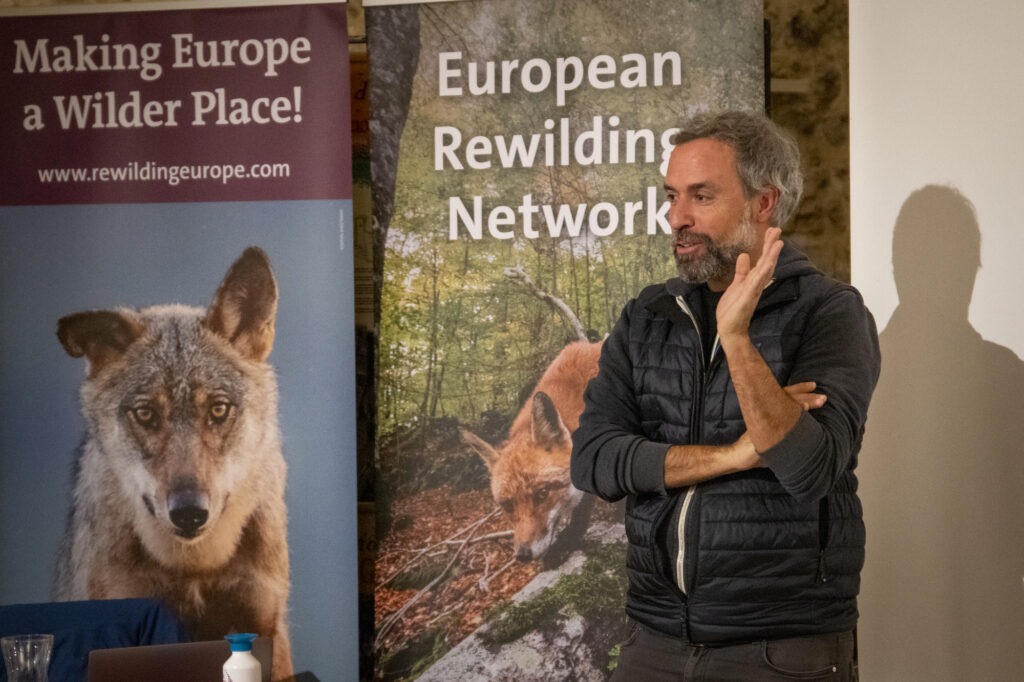Within the coronary heart of the Central Apennines rewilding panorama, the residents of Pettorano sul Gizio are benefitting from lives which are more and more entwined with native nature.
Nelleke de Weerd
Magnificence and the beasts
From the vantage level of Piazza Rosario Zannelli, the ochre-tiled rooftops of Pettorano sul Gizio are surrounded by a sea of inexperienced, the forested slopes of close by hills coated in a verdant blanket of pine, beech, oak, and ash. At present, this charming panorama is loved by rising numbers of holiday makers, who’re drawn to this charming city in Italy’s Central Apennine Mountains to benefit from the tradition, delicacies, and – more and more – the native wild nature.
Formally listed as one among Italy’s “borghi piu belli” (most lovely small cities), tiny Pettorano is the unlikely but massively interesting star of Central Apennine rewilding. Perched on a hilltop above the Gizio River, it’s neatly sandwiched between two of an important protected pure areas within the nation – the Abruzzo, Lazio and Molise and Maiella Nationwide Parks. Each are house to a variety of iconic wildlife – corresponding to wolves, wild boar, Apennine chamois, pink and roe deer, golden eagles, and griffon vultures – whereas the flagship species is the endemic and endangered Marsican brown bear, which boasts a small however slowly growing inhabitants of round 60 people.
Flanking Pettorano is the Monte Genzana Alto Gizio Regional Nature Reserve, one among 5 areas which are being developed by the Rewilding Apennines workforce as large-scale coexistence corridors between these nationwide parks and different essential pure areas. By rewilding these corridors, and enabling and inspiring native communities to reside alongside wildlife, the intention is to develop the territory into which animals can safely disperse and thrive.
The autumn and rise of nature
Whereas nature is at all times dynamic, man’s interference within the panorama typically results in speedy and dramatic change. If we may bounce inside a time machine and journey again 120 years, the view from Pettorano’s Piazza Rosario Zannelli can be considerably much less picturesque. A sepia photograph taken from the sq. in round 1905 reveals hillsides nearly utterly stripped naked by a mixture of livestock overgrazing, clearance for agriculture, and the efforts of native “carbonari” (charcoal makers).
Quick ahead 40 years and Pettorano’s pure restoration started after the conclusion of the Second World Struggle, as Italy entered a interval of unprecedented financial progress and excessive inhabitants mobility. The disparity of wealth and of employment between city and countryside areas triggered a interval of intense rural depopulation throughout the Central Apennine area.
“There was a mass exodus of individuals to massive cities, which left behind an enormous expanse of unattended land,” says 44-year-old wildlife photographer and videographer Bruno D’Amicis, who moved to Pettorano together with his household three years in the past, having been drawn to the world’s wild nature. “This was the start of the rewilding course of, as human strain on the panorama across the city declined and nature began to bounce again.”
A socio-economic engine of change
Guaranteeing communities profit economically from wildlife comeback has at all times been an integral a part of the rewilding course of, because it helps to additional promote coexistence and generate extra help. On this method, the restoration of untamed nature round Pettorano is now providing burgeoning alternatives to lots of its residents, simply as rewilding is appearing as an engine of optimistic socio-economic change in each different panorama the place Rewilding Europe and its companions function.
“Because of the efforts of the Rewilding Apennines workforce, and accomplice NGOs corresponding to Salviamo l’Orso (Save the Bear), Pettorano has grow to be an actual hotspot for rewilding and conservation lovers,” says Bruno D’Amicis. “It’s been nice to see growing numbers of those individuals go to Pettorano, and even relocate right here. It’s been an financial and social shot within the arm for the city.”
Situated in a single nook of Piazza Rosario Zannelli, Il Torchio is among the hottest eating places in Pettorano.
“We at the moment are internet hosting many rewilding occasions,” says proprietor Milena Ciccolella. “These have been an actual life-saver in financial phrases, and have stimulated us creatively, as we now supply vegetarian dishes on our day by day menu. We’re additionally planning to supply cooking programs to ‘rewilding visitors’. The restoration of nature is slowly however certainly including worth to the Pettorano economic system.”

Nelleke de Weerd
Connecting with the wild
Throughout Pettorano’s social spectrum, rewilding is enabling and inspiring each residents and guests to forge and reforge connections with nature. With iconic species such because the Marsican brown bear and Apennine chamois appearing as ambassadors for the panorama, rising numbers of individuals at the moment are exploring the city’s wild environment.
“The Covid-19 pandemic impressed me to begin mountain climbing within the mountains round Pettorano once more,” says 55 year-old architect Massimo Ricciotti, a long-term resident of the city. “I’m so blissful that bears have returned to this space. Often, I stroll in nature as soon as per week – it’s a type of remedy for me, a time the place I can chill out and clear my head. I do know many different individuals who profit in the identical method.”
“I like it that we are able to see animals on daily basis right here,” says Bruno D’Amicis’s youngest son Nils, aged seven. “We are able to hike or play subsequent to the river and go trying to find animal tracks. I typically spot roe deer and foxes from my college window or the schoolbus. In Pettorano I really feel like I’m in nature, and that’s a very good feeling.”
Wish to know extra?
This weblog is taken from an extended story entitled “The city that went wild”, which featured within the Rewilding Europe Annual Evaluate 2022.
Obtain a PDF of the story Or take a look at our Annual Evaluate 2022


















